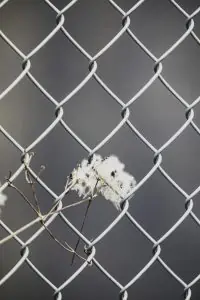How Thick Are Cedar Fence Boards?
Cedar fence boards are among the most popular choices for home fencing, primarily because they look great, last a long time, and can add value to your property. Whether you’re building a new fence or replacing an existing one, it’s important to understand how thick are cedar fence boards and what types of wood they are made from.
(Looking for vinyl fence slats contractor? Contact us today!)

Western Red Cedar (CRC) is a type of cedar used for fences. This species has warm, reddish tones with a unique grain pattern and well-spaced knots. The wood can also be stained in a variety of colors to enhance its appearance.
Pine is another commonly used wood for fences but is not as durable as cedar because it requires chemical treatments to make it resistant to moisture and bugs. Plus, it’s more prone to warping, buckling, and shrinking.
Staining a Cedar Fence
When it comes to staining your cedar fence, our lumber experts advise choosing a high-quality oil or acrylic/oil blend. These stains protect your cedar from the sun and help it retain its natural reddish color for longer. You’ll need to re-stain your cedar fence every five to seven years for optimal results.
White Cedar Fencing
When selecting a white cedar fence, you’ll want to consider the cost and how quickly it will need to be stained. This will determine how much you need to budget for your project. Compared to pine, white cedar is a bit more expensive, but it will last longer and resist the degradation caused by UV light and water.
This will save you money in the long run, and it’s a more environmentally friendly alternative to other types of fencing. It’s worth noting, however, that you will probably need to apply a stain several times throughout the life of your white cedar fence to preserve its reddish-brown hue and prevent it from becoming gray over time.
Pressure Treated Pine is a less expensive option for many people, but it isn’t as durable as cedar and has a higher risk of warping or bending. It’s also more prone to decay and insects, so you’ll need to maintain it with regular maintenance to avoid problems.
Japanese Cedar is a more affordable and eco-friendly option but isn’t as durable or long-lasting as Western Red Cedar. It’s also more prone to insect infestation and decay, so you’ll need to take extra care with its installation.
You should also ask if the fence company is using premium quality wood, as cheaply-made cedar may not stand up to the elements. A professional will ensure that the cedar you receive is a high-quality material, which will give you peace of mind that your cedar fence is going to look as good as it can for many years.
You’ll also need to think about how tall your fence is. Cedar fences are typically 4’ or 6’ tall and can be made in a variety of styles and lengths to suit your needs. You can also choose from multiple picket options like dog ear, flat top, and french gothic. Cap and trim boards can be added to your wood fence to finish off the tops of your posts and pickets.

